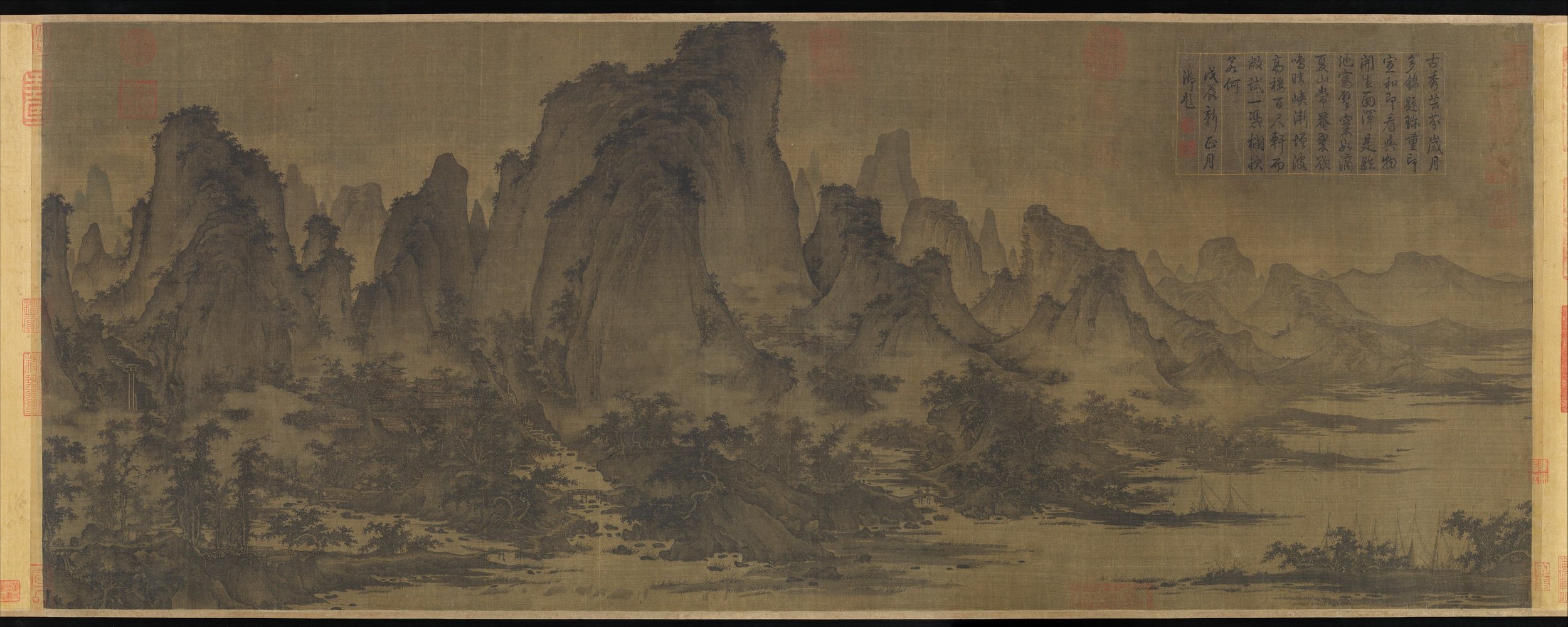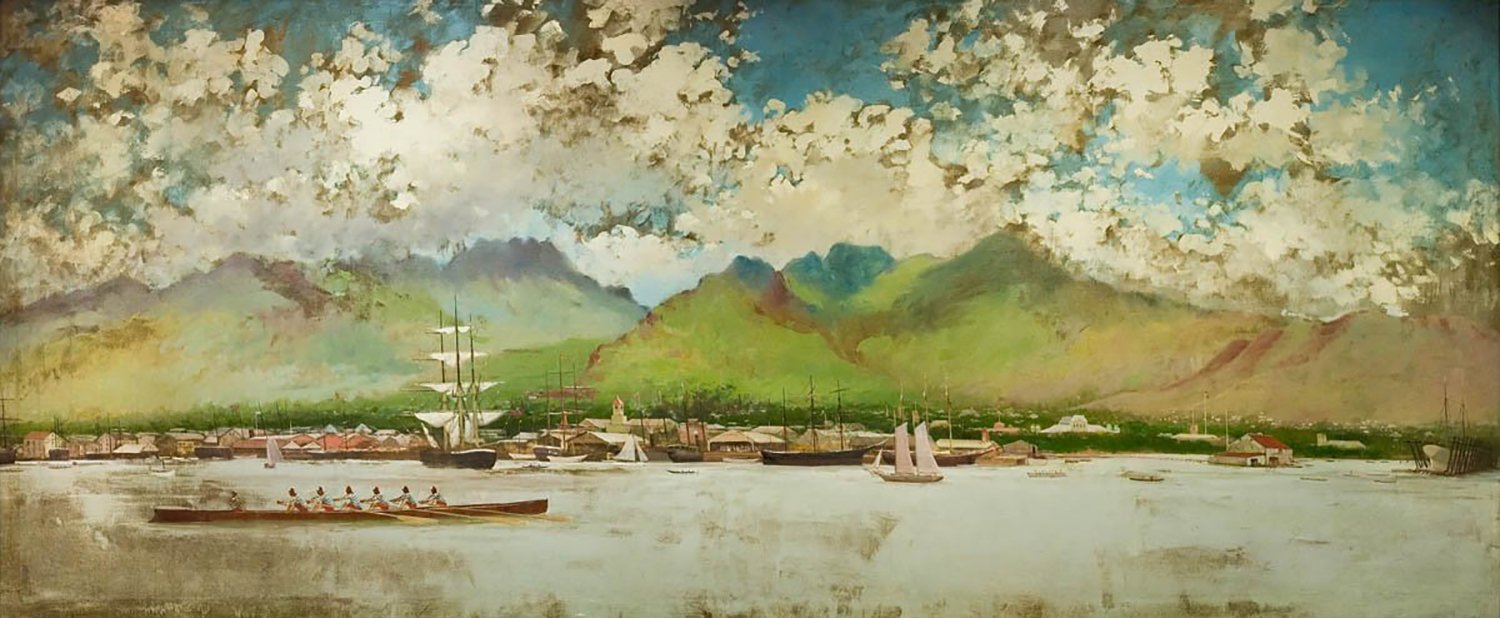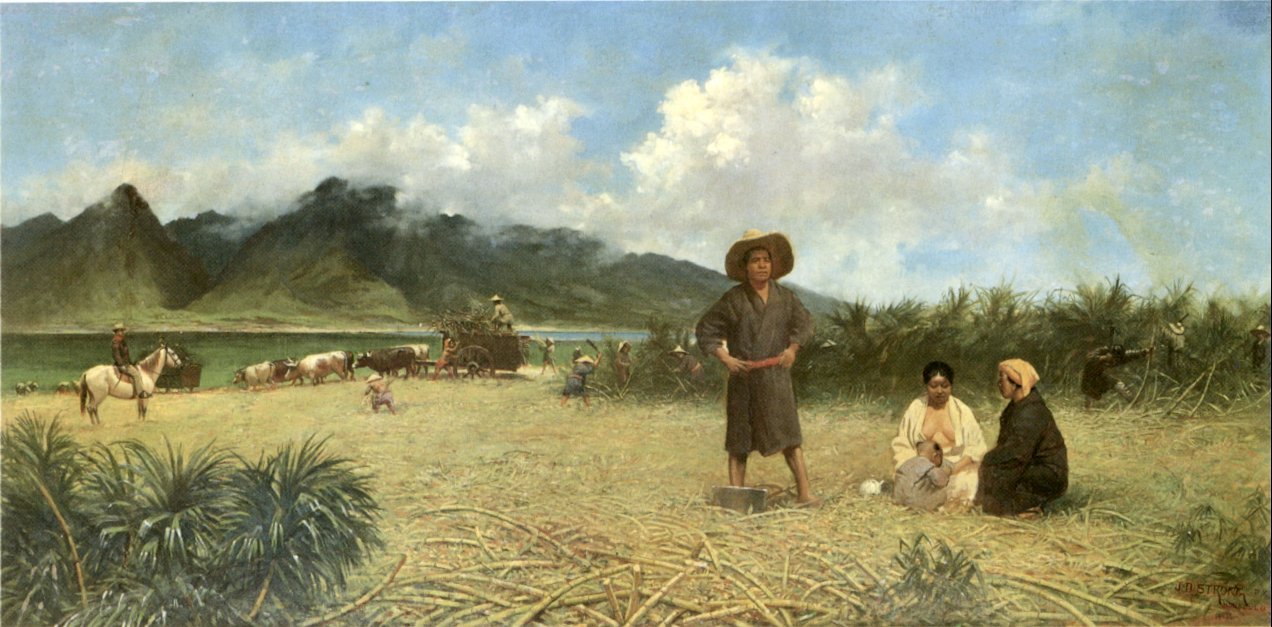Slow Read: Week 9
Landscape: Sharing Our Space
Redemption is a place with neighbors
I knew early on that I wanted to pair a Chinese landscape painting with a painting of the American West. But I wasn’t exactly sure what I was going to really SAY about that pairing—what lesson I thought we might learn—until I had written and revised the chapter.
Now of course landscapes can be a prompt to doxology. Like Margareta Haverman’s Vase with Flowers, a beautiful painting of the natural world can direct us to praise our Creator God. And I’m so grateful for artworks that do this, including the work of my first art history teacher, Ed Kellogg.
But for this project, I wanted to think about landscape’s social role. Landscapes are not just images of pretty places. They teach us how to think about our relationship to the world in which we live. They can also shape our sense of responsibility toward the land and toward our neighbor, who shares this space with us. They can even, as my colleague Jeff Morton has shown, help us think about our own displacement.
Landscape painting, or shan shui (literally “mountain-water”), developed in fifth century China during the Liu Song dynasty. Mountains—believed to be the home of the immortals and a powerful manifestion of qi, or energy—dominated the Chinese imagination and served as an opportunity for both aesthetic and philosophical exploration.
Most western landscapes offer a singular, framed view. East Asian landscape paintings, on the other hand, have an almost cinematic quality to them. I love imagining what it would be like to experience Qu Ding’s 11th century Chinese scroll properly: unboxing, unwrapping, and unrolling a length of silk and moving along a foggy, mountainous landscape of ink.
There’s a moment of surprise when we see the two humans traversing a bridge—their ant-like scale forces us to re-calibrate how tall these craggy peaks actually are.
You are definitely going to want to look at this image online via redeemingvision.com or at the Met Museum’s website. It is worth the slow zoom and scroll.
As an added bonus, here’s a video of another scroll painting: Jiang Song’s Winter Landscape from the first half of the 16th century. This scroll was on view at the Met when I visited, and I slowly walked its length, from right to left, trying to imagine what it would be like to unfurl it myself.
In the context of Neo-Confucianism, the landscape is a means of connecting to the entire cosmos. Qu Ding does not depict a particular place in Summer Mountains; he represents the structure of the whole world. And, he invites us to participate in it as a shared philosophical experience.
In the West, however, landscape painting developed and gained popularity much later. It was not until the sixteenth century that landscape became an independent subject in European art, and it was only with the rise of Romanticism in the nineteenth century century that its status was dramatically elevated.
Albert Bierstadt’s Rocky Mountains—Lander’s Peak (1863) is an example of the sublime aesthetic favored in this period. This painting is truly monumental in person and there are details in the mountains that you can never get close enough to see in person.
But the foreground, too, is packed with lively figures of Shoshone men, women, and children. Pay attention to how Bierstadt uses value in the painting to create contrast and unity.
That mirror-like lake and gleaming waterfall are a siren song. The bright value arrests my attention, and I find myself struggling against its pull in order to return to the animals and people in the foreground. As we learn in this chapter, Bierstadt’s visual choices have real social and political implications. The painting blithely obscures the Shoshone’s struggle against European-American Manifest Destiny. Our ability to easily pass over the people in the painted field teaches us to anticipate an equally peaceful takeover of the actual land. This mythic vision allows us, as viewers, to imagine the West simultaneously as a pure, Edenic wilderness and as a space that we can choose to occupy and control. And in Bierstadt’s context, the imagined viewers were white, urban, upper- and middle-class men who had the money and social mobility to literally master the West.
Qu and Bierstadt paint vast landscapes in profoundly different ways, but they also instruct their viewers to relate to the land differently too. And I argue that the same impulses that drive both artist’s paintings continue to reinvent themselves in new ways today.
And then, just for fun, I sneak Berthe Morisot’s Young Woman Knitting back into the conversation. You’ll see why!
And here’s one final thing to consider. The patronage of a landscape—who pays for the painting—can also have significance. When I was in graduate school, I became curious about the sublime paintings of erupting volcanoes, pristine beaches, and lush but rugged mountains that filled the Honolulu Museum of Art and the local Bishop Museum. Who bought or commissioned these scenes, most of them void of human presence?
I learned that in the 1880s, a succession of American artists – later known as the “Volcano School” – traveled to the Kingdom of Hawaiʻi and produced scores of landscapes. While white, upper-class landowners in Hawaiʻi served as the primary patrons of such paintings, the reigning monarch, King David Kalākaua, also commissioned his own sweeping landscapes from the same artists. I could imagine why white landowners, intent on annexing Hawaiʻi to the United States, might want such romantic views. But what was King Kalākaua doing? Turns out, his landscapes looked a little different.
I later wrote an article that focuses on the two competing narratives of paradise at work in both paintings and writings about the Hawaiian Islands in the 1880s. “Paradise” could invoke a Romantic position, one that celebrated the landscape’s wildness and equated nature in its pure state with the lost Garden of Eden. On the other hand, Kalākaua’s commissions reflect what environmental historian Carolyn Merchant calls the “Recovery Narrative:” a story of humans reversing the effects of the biblical Fall by subjugating desolate and distant wilds and transforming them into fruitful lands. My article argues that Kalākaua’s presentation of “Paradise” was part of a multi-pronged but ultimately failed strategy to resist American imperialism and present the Kingdom of Hawaiʻi to the West as a prosperous, profitable nation.
Like I said, landscape paintings can be incredibly powerful tools.








